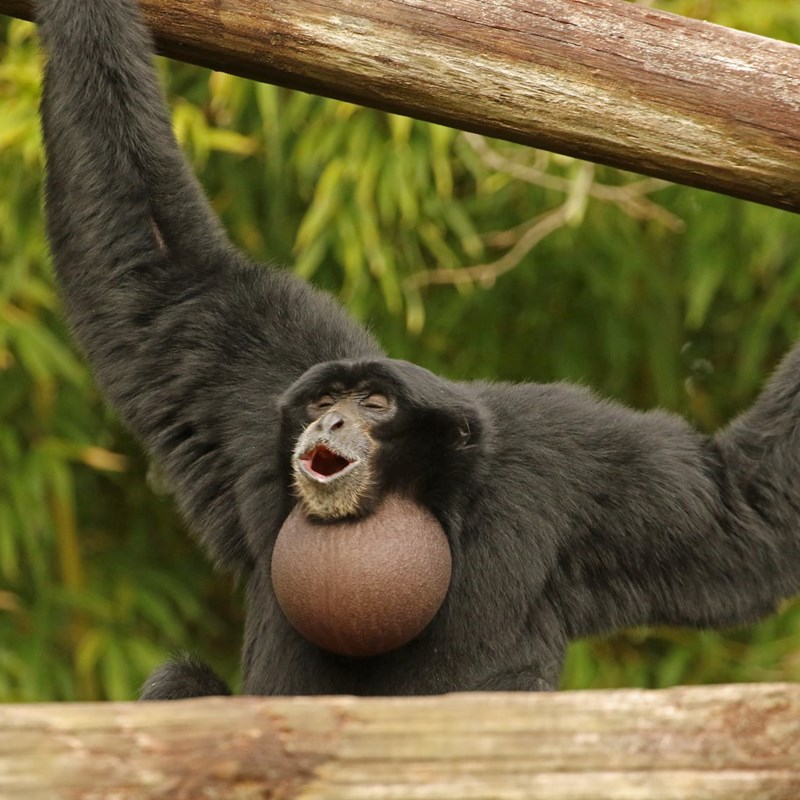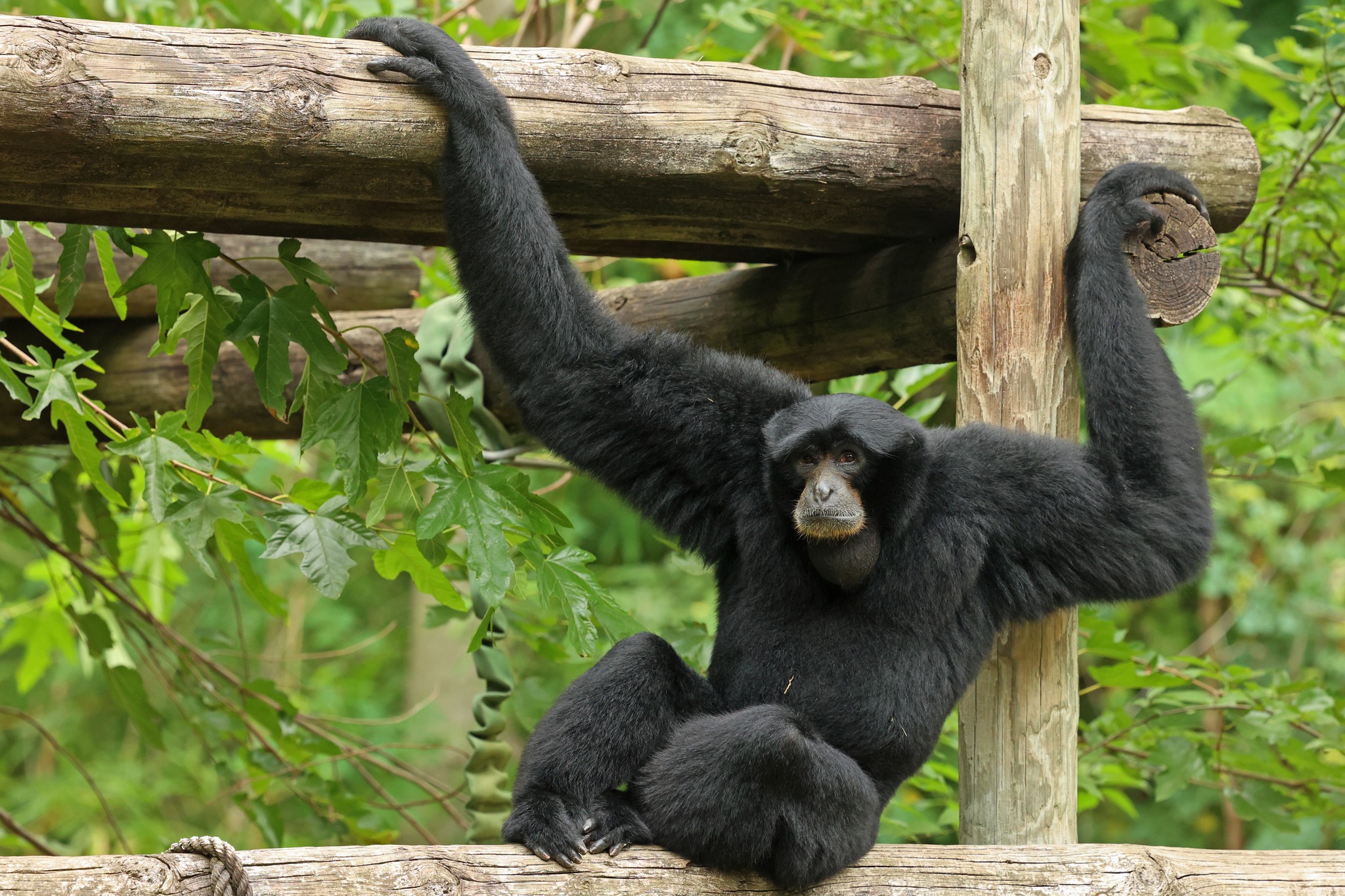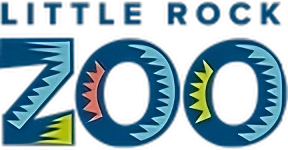Small Apes
Small apes, also known as lesser apes, belong to the family Hylobatidae and include species such as gibbons and siamangs. These agile and arboreal primates are found in the dense forests of Southeast Asia, where they swing effortlessly through the trees using their long arms. Small apes are known for their distinctive vocalizations, including melodious songs and loud calls used for communication and territorial defense.



ENDANGERED
Lar Gibbon
(White-Handed Gibbon)
They have very long arms and are perfectly suited for brachiation (hand-over-hand). Despite their lack of a tail they have a wonderful sense of balance because they have adapted by raising their long arms above their head for stability. They vary in color ranging from dark brown to black to red, however, they all have the white fringe framing their face, as well as white upper hands and feet. Males and females are similar in size. They have large throat sacs which enhance their calls to be heard a long distance away.
Habitat/Range:
White-handed gibbons are found in the tropical rainforests of southern and southeast Asia. They are arboreal and rarely descend below the canopy.
Behavior:
White-handed gibbons are diurnal and their lifespan is 25-30 years in the wild. Gibbons enjoy singing with their partner or family unit each morning and this functions as territorial calls. Males will also sing together in an attempt to deter potential predators or threats. They do participate in social grooming, however, this is more for hygienic reasons than social. They spend the majority of the day (roughly 16 hours) in “sleeping trees” and is believed to avoid predation.
Gibbons sing duets with their partners or parents and these can last on average 11 minutes.
Endangered. Loss of habitat due to palm oil plantations and other agriculture threatens this species. The pet trade in Thailand is also affecting these animals.
Conservation Actions:
White-handed gibbons are a nationally protected species in every country across its range. However, increasing development through protected areas causes fragmentation and easier access for hunters.
ENDANGERED
Siamang
Siamangs are covered in thick black fur with a lighter grey area around the chin and mouth. They have long, slender arms/legs, opposable thumbs, and a great toe that is farther apart than the other digits. On their throat is a large, inflatable sac that is used to amplify sound.
Range/Habitat:
This species has a range of Sumatra, Peninsular Malaysia, and in a small area of southern Peninsular Thailand. They inhabit tropical rainforests.
Behavior:
Siamangs are monogamous and usually mate for life. They live in family groups of parents and up to three offspring. They are active during the day with much of their foraging happening in the morning. The groups are highly territorial, marking this territory with loud singing.
The Little Rock Zoo is home to a bonded pair of Siamangs; Sutura and Crash. As you enter the Little Rock Zoo you can often hear the bonded pair singing duets to each other. The siamang’s “song” includes booms and barks, made louder by an inflatable throat sac. These booming calls can be heard for up to a mile away through the forest.
The pair arrived at the Little Rock Zoo together in 2008. This pair has been selected by the Species Survival Plan as a good match to best preserve genetic diversity in the captive population of this critically endangered Asian lesser ape. The pair have gone through the motions of breeding with no luck.
Learn more during the Keeper chat Saturday and Sunday at 2:00 PM.
- Siamangs have a grayish or pinkish throat sac, which they inflate during vocalizations. The throat sac can become as large as a grapefruit.
- Siamang songs can be heard up to 1 mile away
- Siamangs are syndactylous, having their 2nd and 3rd toes fused by a thin webbing of skin.
- The siamang is the largest of the lesser apes; they are about twice the weight as the other gibbons in their family.
Siamangs are endangered because they are directly affected by habitat destruction from logging and agriculture practices. The pet trade is also responsible for their decline. Young siamangs are obtained as pets, and their owners often find they mature into aggressive and unpredictable adults.
Photos by Karen Caster



